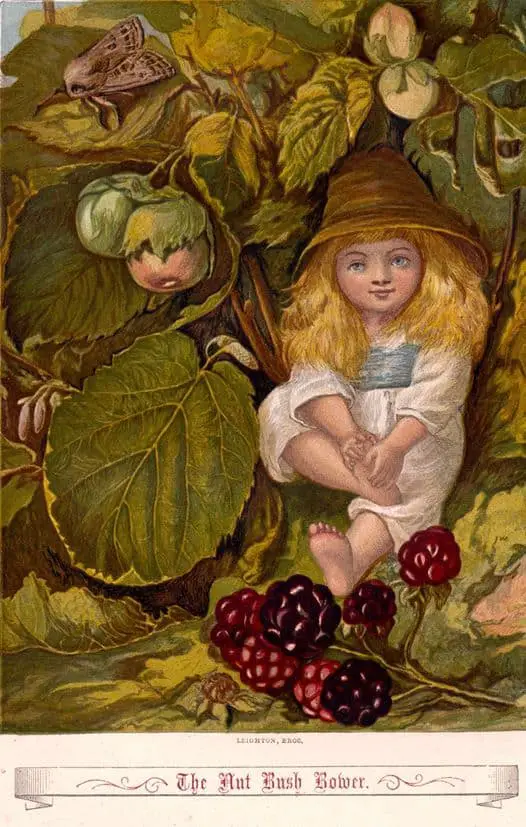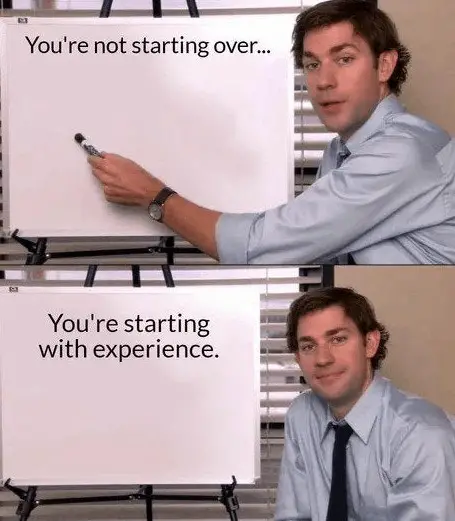The ‘New Situation’ describes the part of a story also known as the ‘denouement’. The audience is left with a sense of what the main character’s life will be like from now on. This comes right after the anagnorisis (realisation) sequence. The main character has undergone a change (unless it’s a comedy) and their life will be better than before, worse than before, or just plain old different.
In any case, the audience wants enough clues to guess how life is going to turn out for them from here on in.

DIFFERENCES OF OPINION
There is often controversy about where a film ‘should have’ ended. Audiences want different things from their endings. Take Adventureland, a 2009 coming-of-age film. Hang out at review forums and you’ll soon notice that a lot of people think the story should have ended with the main character saying goodbye on the hill. Realistically, in the real world, he would probably never see these people again. But this is movie land, and we see a (dream?) sequence in which his crush moves to New York and they live happily ever after. The screenwriters decided the audience of this film would appreciate a happy ending, but the scene on the hill would certainly have been enough of a ‘New Equilibrium’ from a storytelling point of view. All we really needed to know was that the main character is moving on and his life is going to be completely different in New York.
SHORT STORIES
This is where literary short stories deviate from traditional story structure… sometimes. Sometimes we are given very little clues about about how life will be from now on, with short stories sometimes ending at the Self Revelation moment. ‘Get in, get out’, with emphasis here on the ‘get out’. I’m talking specifically about short stories which are what I’d describe as ‘epiphanic moments’. A character makes some small discovery about something/someone. Even in these stories, if you go back you’ll be able to ‘extrapolate’ what their life will be like from now on. In short, short stories require more imaginative work on the part of the reader.
(Genre short stories work the same as longer works, with all seven steps.)
PICTURE BOOK ENDINGS
Picture book endings are their own beast, due to the fact that picture books more than any other story are written for repeat reads.
Picture books without a twist at the end aren’t as much fun as those with a surprise ending that moves the story beyond the book.
@taralazar
The so-called “open ending” that is gradually gaining more and more acceptance — first in young adult novels and then also in books for younger children — should be viewed as a modification of the linear code (in which a character goes on a journey, changes, then returns home).
Maria Nikolajeva
For examples of contemporary picture books with open endings, see This Is Not My Hat and I Want My Hat Back by Jon Klassen.
The great challenge of picturebooks — which is also true of other stories but less so — is the need to create a story which stands up to not only being read twice, but 100 times. Much of the re-readability of a picturebook comes from its conclusion.
There is a growing tendency for picture book endings to be left open, and more often than not, they pose questions to which there is no easy answer. Often the themes are what Egoff calls ‘the darker side of human experience’, as if authors wish to insist that the security of childhood be shattered as soon as possible, or maybe inferring that it is fiction anyhow.
Clare Scott-Mitchell, Give Them Wings, 1988
THE IDEOLOGY OF PICTUREBOOK ENDINGS
How a narrative resolves, ‘ties up’ or ‘untangles’ (both metaphors are widespread), the complications of story is a recurrent concern among theorists, but is of special interest with children’s fiction. Here, the desire for closure, both in the specific sense of an achieved satisfying ending and in the more general sense of a final order and coherent significance, is characteristically a desire for fixed meanings, and is apparent in the socializing, didactic purposes of much children’s literature. There is an idea that young children require (that is both ‘demand’ and ‘need’) certainties about life rather than indeterminacies or uncertainties or unfixed boundaries. Even a genre such as fantasy, which might be expected to offer a site for a play of meanings and for resistances to fixed meanings, usually shows a strong impulse towards closure. … As readers we learn to look for some sense of completeness, both aesthetic and thematic, over and above the bringing of a series of events to a close. Aesthetic completeness is achieved in children’s literature through representation of symmetries, or movements from states of lack to states of plenitude.
Language and Ideology In Children’s Literature by John Stephens
See also Natascha Biebow’s post on picture book endings, with a list of specific things you can do to create a sense of closure. Good if you’re currently stuck!
EXTRAPOLATED ENDING
‘Closure’ is a word borrowed from the field of psychology and describes describe an individual’s desire for a firm answer to a question, and an aversion toward ambiguity. We are very uncomfortable with ambiguity, and sometimes make bad decisions simply to avoid that horrible feeling of hanging in limbo.
Story endings can be classified in various ways — happy versus sad, satisfying vs unsatisfying. Another useful way to think of endings involves the extent of ‘closure’. Importantly, there are two types of closure.
Structural versus Psychological Closure
1. STRUCTURAL CLOSURE is a satisfactory round-up of plot.
2. PSYCHOLOGICAL CLOSURE brings the main character’s personal conflicts into balance. Because it involves characterisation, this type of ending is normally more interesting.
In children’s stories, these two types of ending normally coincide.
Sometimes, in an especially masterful story, children and adults get a different ending. Toy Story 3 is the standout example. If you watch a live audience of Toy Story 3, adults bawl their eyes out but children do not. That’s because the children have had a happy ending so far as they are concerned: The toys are all together. That’s what children can relate to. Adults, on the other hand, can relate to the ending of childhood. Adults know that we’ll never get our childhood back, so when Andy plays with Woody for the last time, before handing Woody over to someone else, adults know that this moment marks the end of Andy’s childhood and he’s never getting it back. None of us are ever getting our childhood back.
For Toy Story 3, children get their structural ending, but adults also get psychological ending. It is not easy to write so successfully for a dual audience, creating a sad story for adults but a happy story for children, but the screenwriters of Toy Story 3 managed it.
SHORT STORY CLOSURE
When it comes to literary short stories, readers have a higher tolerance for a one-sided ending. The New Yorker publishes some of America’s best short stories and are renowned among writers for chopping off the bit that comes after the Anagnorisis. They want the epiphanic part to shine and to resonate.
Narrative closure is not necessarily the same as thematic or ideational closure.
Per Winther, The Art of Brevity, Closure and Preclosure as Narrative Grid in Short Story Analysis
- This holds true even though for certain stories the two types of closure will seem inseparable.
- Modern stories (20th century rather than 19th century) tend to bring the story line to a logical end point but point beyond the text itself to further developments, forcing the reader back into the text to ponder the meaning. In other words, modern short stories reward re-reading. (On this blog I often call it ‘resonance’.)
- We might call the closure of plot a ‘narrative closure‘.
- We might call the other kind of closure ‘hermeneutic closure‘. (Hermeneutic basically = interpretive.)
SHORT STORY EXAMPLES
- “A View Of Mount Warning“ by Robert Drewe features structural closure but not psychological closure, because the view point character never learns whether his best friend saw him kiss his wife. Plot closure comes, sort of, because the two men resume the surface mechanics of friendship.
- “The Garden Party” by Katherine Mansfield is another example of structural closure (because the party ends, the goods are delivered to the bereft wife) but without emotional closure, this time because the main character is young and can’t yet process her feelings about the inequality she has just witnessed.
- “The Love of a Good Woman” by Alice Munro is an excellent example of a short story with emotional closure but not structural closure. When you first read it, this story feels like a classic murder mystery, but — spoiler alert — the mystery is never solved for the reader.
- “A Very Old Man With Enormous Wings” by Gabriel Garcia Marquez is an example of psychological closure, because the family have learned to live with the fallen angel creeping around in the shadows. But the reader is left wondering what events will happen next. This doesn’t feel like the end of the story, plotwise.
- Stories written for the popular market tend to have both psychological and plot closure. “Tobermory” by Saki would be an example of this.
SUSAN LOHAFER’S TERMINOLOGY
Susan Lohafer came up with a similar set of terms: Physical Closure, Immediate Cognitive Closure and Deferred Cognitive Closure.
Physical Closure refers to the end of a sentence, a paragraph, a story itself.
Immediate Cognitive Closure refers to that feeling you get as reader when you understand the surface meaning of a text.
Deferred Cognitive Closure happens some time later when you realise more fully what the story was really about. Hermeneutic closure tends to be deferred or delayed.
EXTRAPOLATED ENDINGS IN NEVER-ENDING PICTURE BOOKS

I include the ‘extrapolated ending’ as a final optional step in storytelling because some stories leave us with an open ending, in which case the work of finishing off is left up to the audience. Since audience members will vary on this, I like to consider it a separate step from the ‘New Equilibrium’ the author has chosen for us.
There is a very common sort of extrapolated ending in picture books — you can probably guess what it is.
It is often implied that the same adventure is about to happen all over again. Perhaps there will be a bit of a tweak. Picture books are unique in that they are the only book designed to be read at least fifty times by both a young and old audience, so this particular story structure encourages readers to think beyond the last page, and acknowledges that they’ll probably be back.
EXAMPLES OF IMPLIED REPEATS
Not all picture books are sweetness and light and routine and comforting, however. This is a fairly new trend (though was already observed by kidlit critics in 1988 — see the work of Sheila Egoff in Give Them Wings) but contemporary popular children’s books are increasingly likely to be open ended.
Famously, This Is Not My Hat and I Want My Hat Back by Jon Klassen have rather gory implied endings. (The sneaky but cheeky fish protagonist gets eaten, for example.) What would have happened if Jon Klassen had shown the little fish being eaten by the big fish? (Or more likely, inside the big fish’s stomach wondering what happened.) This would have probably been considered too much for the youngest popular audience. In short, an extrapolated ending allows children with the capacity for gore to imagine what they like, while more sensitive types don’t have to go there at all.
HORRORS AND IRREPRESIBLE BADDIES
Here’s something picture books have in common with horror films.
In Dead Calm (to take just one example), the audience is left with a sense of calm, knowing that the man and woman have defeated the sociopathic killer. But just before the end, we are given evidence that the killer is not in fact dead. The entire story is about to repeat itself, only this time it may not go so well.
Here’s the thing about horror opponents — they are mechanical in their behaviour and you can’t kill them, no matter how hard you try. Ghosts come back as different kinds of ghouls, possessed creatures show up in different, more invasive places and so on and so forth.

PARABLES, FAIRYTALES AND PARABLE-SPOOFS
Those really old fables and Charles Perrault fairytales offer a moral lesson after the new situation in which we extrapolate that this particular character is not going to make the same mistake ever again… and neither should you.
The “Ripped Pants” episode of Spongebob Squarepants does the same thing, with a musical outtake instead of the didactic paragraph, in a spoof of a parable about recycling the same joke.
You might consider … whether the ending of your book is a high point of satisfaction for the reader. If not, is there another scene or circumstance that might make a better ending?
Sol Stein, from Stein on Writing
Mother Jones: You’ve said that you usually write the ending of a book first. How would you write the ending of this interview?
Larry McMurtry: I have never written the end of any of my novels, but I do conceive of the ending before writing. I write to get to that ending. The ending of this interview? Thank you.
Interview with Larry McMurtry
John Mullan: The ending is always what people complain about if they complain about a novel. I do a thing every month for the Guardian newspaper in England where we actually get a contemporary novelist in to talk to readers and to me about a novel that everybody’s read, and when the readers ask the novelist questions, if they have some kind of puzzlement or dissatisfaction it’s always the ending they focus on; why did you end it like this? Why didn’t you do this with this character or that with the other? And it’s almost as if…if you enter into an elaborate contract with a novelist as a reader, the ending is where you’re paid or you’re not, the novelist does justice to you and the characters or doesn’t.
from The Book Show: interview with John Mullan
Ramona Koval: And even though you say ‘in life there are no proper endings, we expect proper endings in books.
I hate hate hate when the ends of chapters say things like, “I would look back on this day for years and wonder what ever happened to that cat.” You’ve just sucked me into a wonderful chapter and I’m eager to see what comes next, but with that one line you draw attention to the fact that this is a story I’m being told and it takes me right out of the immediacy of it and kills all the tension. Also, if this is a murder mystery or the character is being chased, you’ve just told me that character survives for years and so they probably live at the end of this story. What’s the point of continuing to read if the reader knows the ending?
CA Marshall, editor
- Writing Fiction: Killer Novel Endings from WD
- The Top 10 Best Closing Lines Of Novels from Lit Reactor
- The Ten Best Book Endings from PW
- The Importance Of Endings from Book Riot
- 10 Fantastic Novels with Disappointing Endings from The Atlantic
- 10 Better Endings For Classic Books from Book Riot
- Literary fiction has a problem with happy endings from The Guardian
- The Top 10 Best Closing Lines Of Novels from Lit Reactor
- The 10 Best Closing Lines Of Books — In Pictures from The Guardian
- The Ten Best Book Endings from PW
- The Importance Of Endings from Book Riot
- 10 Fantastic Novels with Disappointing Endings from The Atlantic
- 10 Better Endings For Classic Books from Book Riot
- Make Your Ending As Big As Possible from Lydia Sharp
- Three Important Rules For Writing Endings from The Write Practice
- Endings Shouldn’t Make Your Point from Cockeyed Caravan
- On Endings from The Literary Lab
- 10 Nagging Questions Left Open By Disney from io9
- Ending Tropes from TV Tropes
- Is Huckleberry Finn’s Ending Really Lacking? from Scientific American
- What’s the value of a great ending? from Lit Reactor
- What are some tips for figuring out the ending to a story? answered by Go Into The Story
- A definition of climactic endings from Changing Minds
- How To Write Endings That Wow! from Warrior Writers
- 32 of the Worst Book Endings That Shouldn’t Have Made It Into Print from BuzzFeed. I disagree with all of them, but what do you think?
- Short Story Endings
- Two Types Of Short Stories
- The No Ending Trope — But how many of the TV Tropes examples have one type and not the other?
